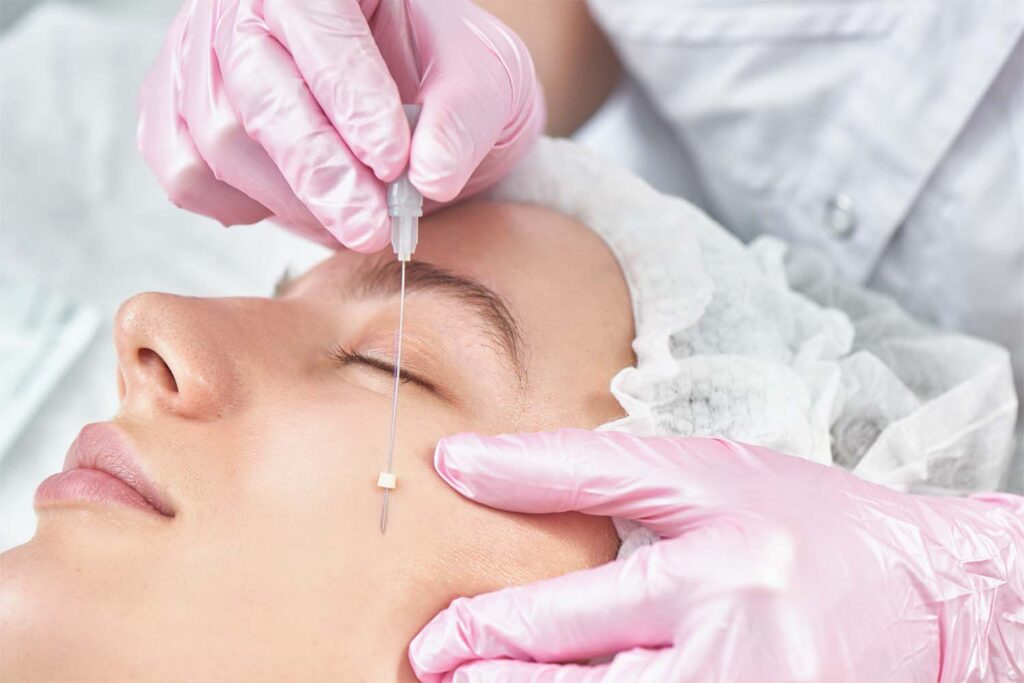The visible signs of aging as we get older are normal. However, some people age faster than others or have asymmetrical sagging or wrinkling that can alter how they feel about themself.
Thankfully, medicine and technology have come a long way over the years, so we have many treatment options for premature aging.
You’ve probably heard of a facelift, one of the top five plastic surgeries performed each year. The facelift techniques used today are hardly detectable and should leave the patient feeling rejuvenated instead of overdone.
What Is a Facelift?
The surgical name for a facelift is rhytidectomy. It’s a general term used for cosmetic procedures that remove fatty deposits, sagging skin, or wrinkles on the face and neck to rejuvenate the facial tissues.
A surgical facelift is done by creating a flap of skin on each side of the face and pulling it back for a more youthful contour. If necessary, excess skin or fat is removed before closing the incisions.
It’s common to pair a neck lift (platysmaplasty) and facelift together for more advanced signs of aging. Pairing the two surgeries can be the best way to produce an overall naturally refreshed look.
Dr. Applebaum will address your specific skin concerns and aesthetic goals to help you decide which treatment option is best.
How Is a Mini Facelift Different From a Regular Facelift?
A mini facelift can deliver similar results to a regular facelift, except it’s less invasive and has a shorter recovery period.
Both procedures are performed with incisions near the ear or hairline, but less skin is altered with a mini-lift. In most cases, a mini facelift addresses the skin around the jowls and upper neck, whereas a traditional facelift usually includes the full face and entire neck.
If you have advanced signs of aging or a lot of excess skin, a regular facelift is usually required. The incisions might be a little bigger and the recovery process a little longer, but not by much.
How Should I Prepare for a Facelift or Mini-Lift?
Preparation for facelift surgery will be similar regardless of your procedure.
Before your scheduled surgery date, you may be asked to:
- Undergo lab testing and medical evaluation
- Avoid anti-inflammatories such as aspirin
- Pick up prescription medications
- Apply preoperative products
- Stop smoking
To prepare the best you can, it’s a good idea to organize child care if necessary, meal plan, and arrange for a support person to be with you for the first 24-48 hours after surgery.
What Should I Expect After a Facelift or Mini-Lift?
It’s normal to be concerned about pain management and recovery from having a surgical facelift. Dr. Applebaum will provide you with detailed post-operative instructions and do everything possible to ensure you’re comfortable during recovery.
Immediately after surgery, you will experience bruising, swelling, and possibly numbness around the incisions. Everyone heals differently; however, those symptoms often subside over the following two weeks.
Tips for a Smooth Recovery
- Use oral and topical antibiotics as directed to avoid infection
- Do not remove bandages or drainage tubes (if necessary) until your post-op appointment
- Apply cool compresses for pain instead of heat
- Sleep with your head elevated
- Get plenty of rest
Most patients are able to stop taking prescribed pain medication after 3-4 days. Although you may not be ready to go out in public, you should start feeling like yourself again. At that point, it’s good to walk around and get the blood flow moving to promote a quicker recovery.
What Are Less Invasive Procedures To Rejuvenate the Face?
Beyond a facelift or mini-lift, several additional options can reduce facial wrinkles or tighten sagging skin.
It’s not uncommon for Dr. Applebaum to recommend a combination of surgical and minimally invasive cosmetic treatments to achieve the best results.
Fillers and Injectables
The loss of volume in our face as we age can increase the appearance of fine lines and wrinkles. Facial fillers are one of the best ways to restore a more youthful look while being minimally invasive.
The injector’s skill is crucial for optimal results using fillers and injectables. Dr. Applebaum has an in-depth understanding of facial anatomy and how to avoid complications.
Our entire staff is very familiar with many types of injectables designed to soften wrinkles, enhance fullness, and smooth facial contour.
Some of our approved injectables include Juvederm, Restylane, Botox, and Dysport.
Laser Skin Resurfacing
Laser skin resurfacing is another minimally invasive treatment used to improve the appearance of fine lines, creases, and wrinkles. It’s also well-known for correcting skin discolorations, treating acne, and lessening traumatic scarring.
Dr. Applebaum prefers to use the Dot C02 Laser, which is the latest innovative technology that effectively minimizes pain, swelling, and redness with very little downtime. It’s suitable to use on all types of skin and highly customizable to meet each patient’s needs.
This method can be done using topical gel anesthesia instead of general anesthesia, unlike earlier lasers.
Radiofrequency Skin Tightening
Our non-surgical face tightening procedure is an effective way to firm the skin on the face and neck area. It’s best suited as a proactive approach to minimize the need for more invasive surgeries later on.
Dr. Applebaum uses targeted laser energy that heats the treated skin, constricts collagen, and causes the skin to look tighter and less crepey. It continues to work overtime while stimulating collagen production and elastin in the skin.
The results look very natural, toned, and youthful. No anesthesia is required, and there is relatively no downtime.
Bottom Line
The difference between a facelift and a mini facelift is the amount of skin the surgeon needs to remove and how long the recovery period will be.
Patients in their 40s may begin to consider a mini-lift, whereas a full facelift should be reserved for more mature skin.
Source:
Plastic Surgery Statistics | American Society of Plastic Surgeons
Facelift and Mini-Facelift | Johns Hopkins Facial Plastic and Reconstructive Surgery

